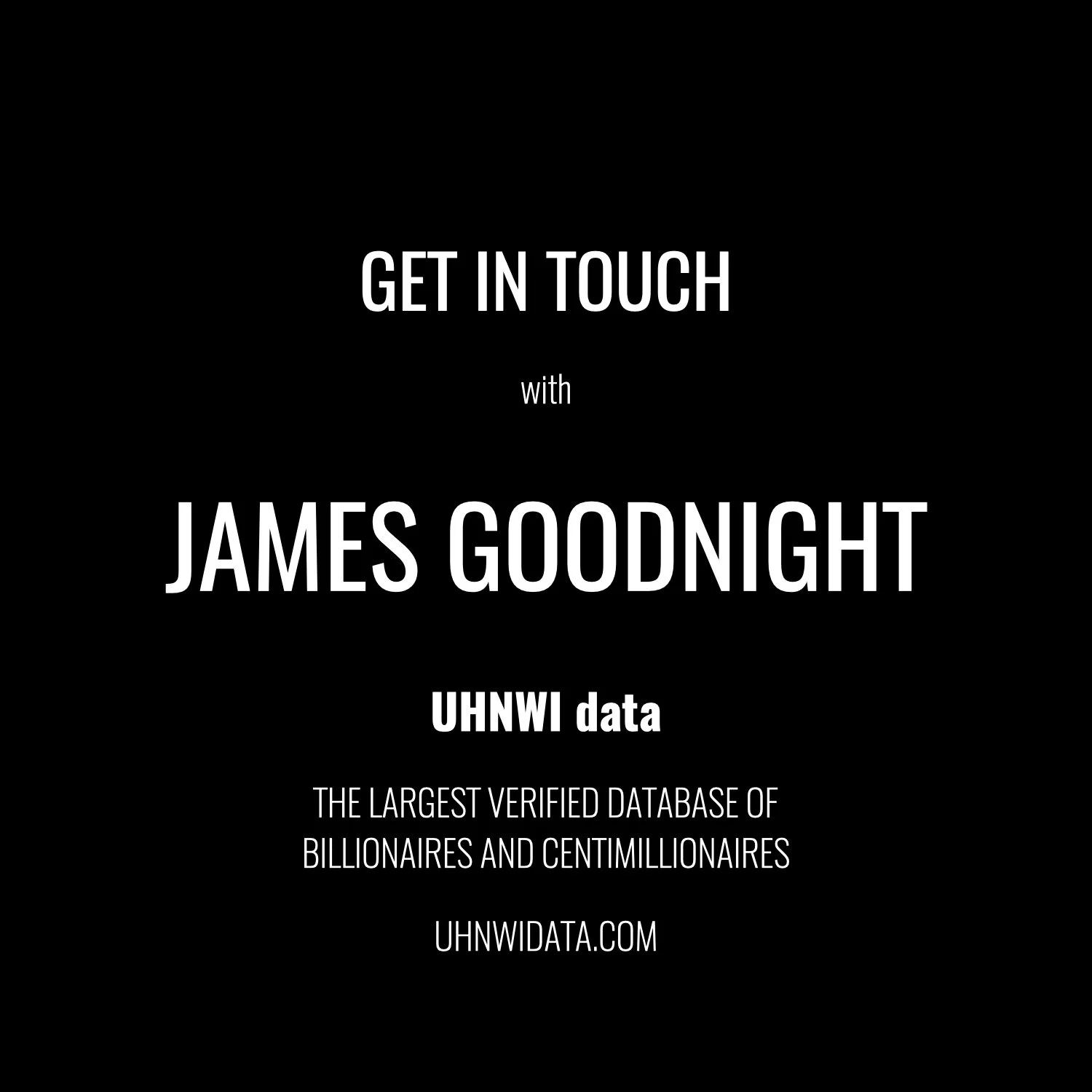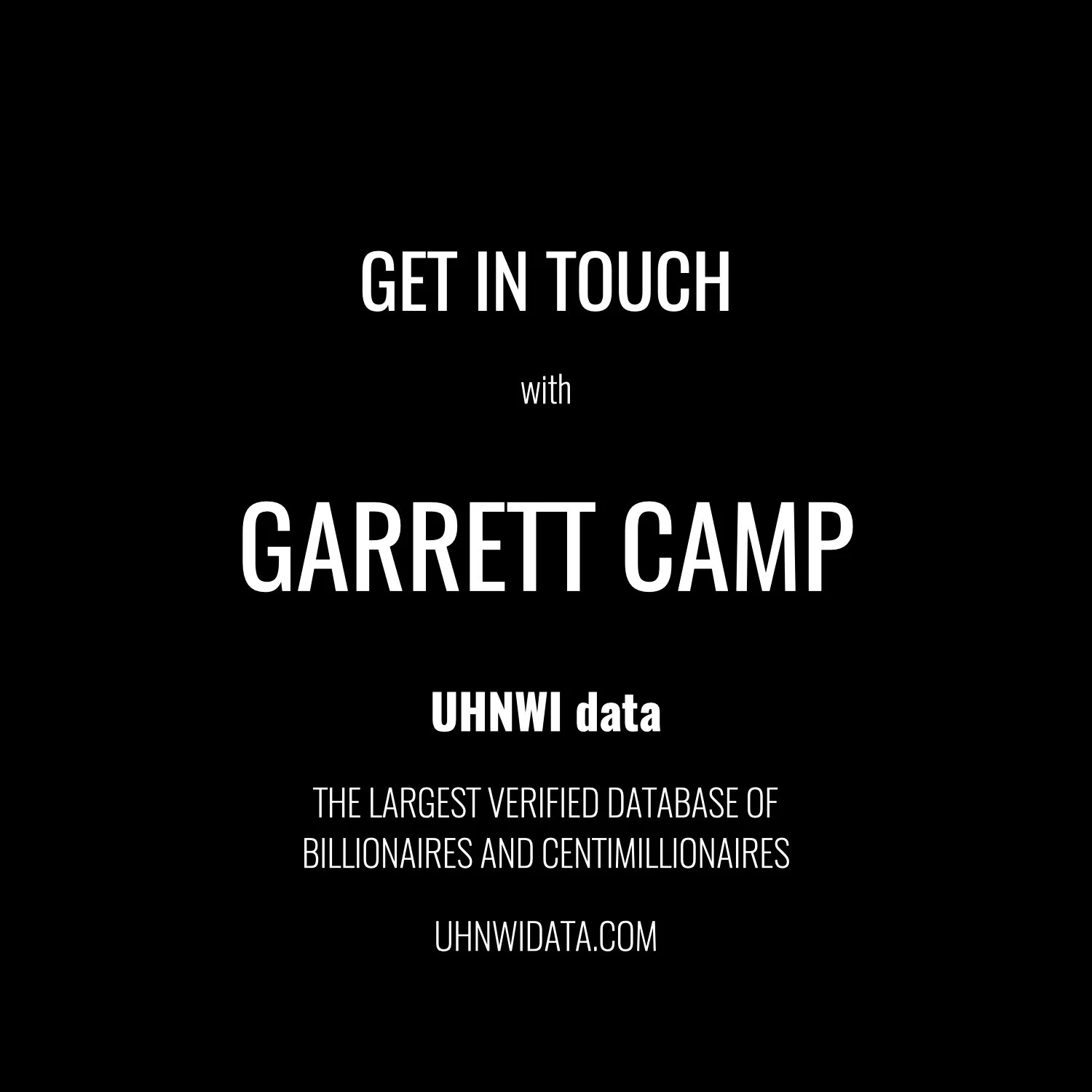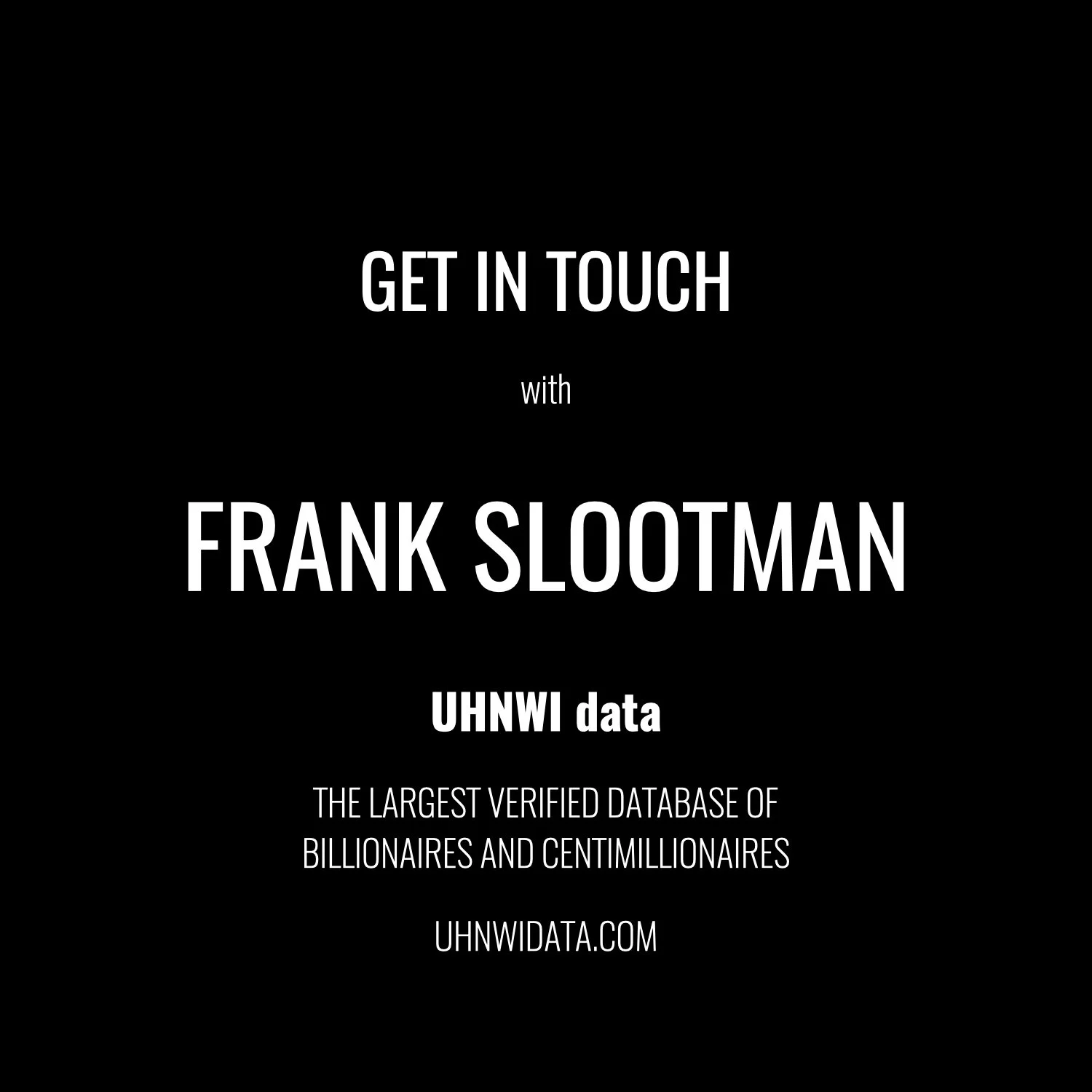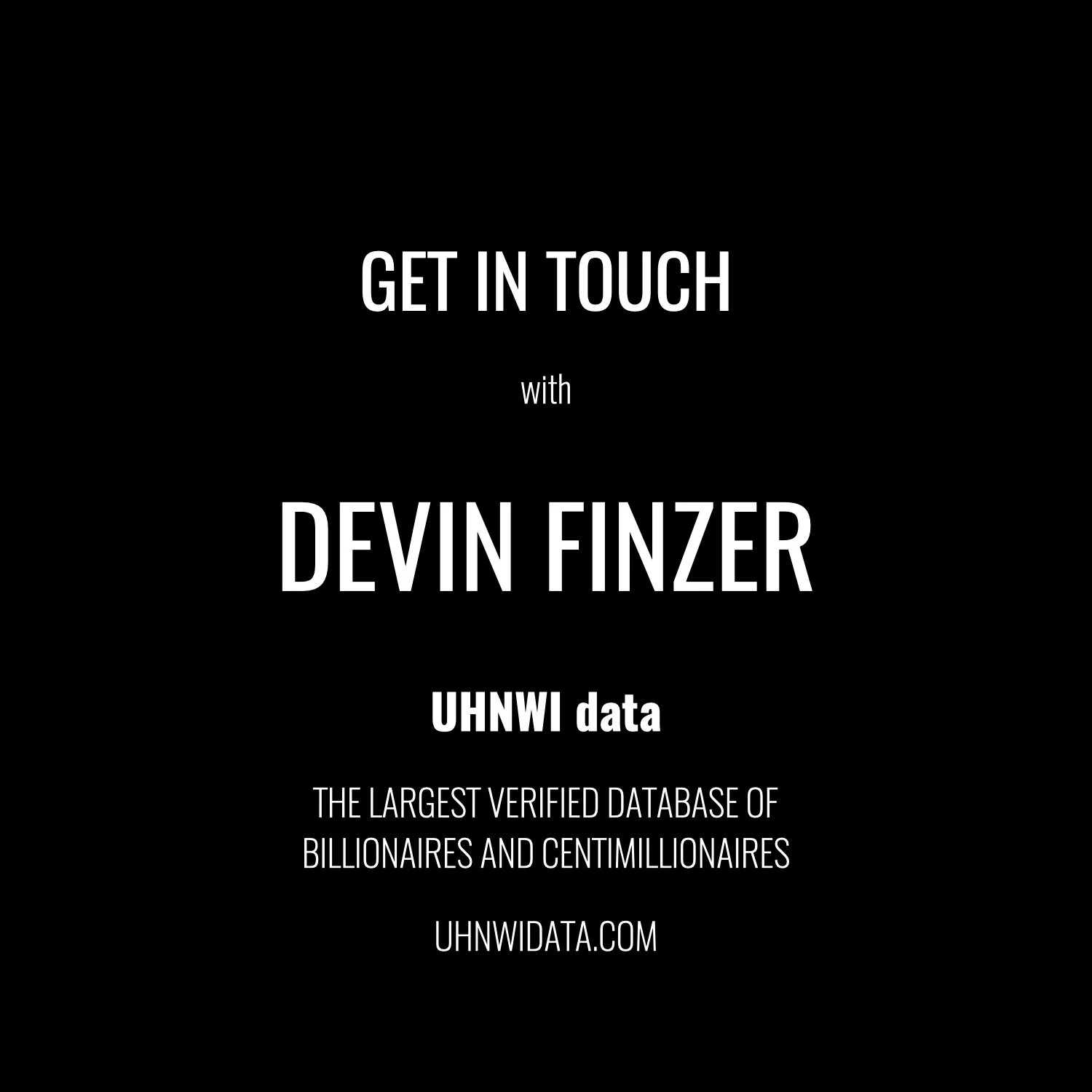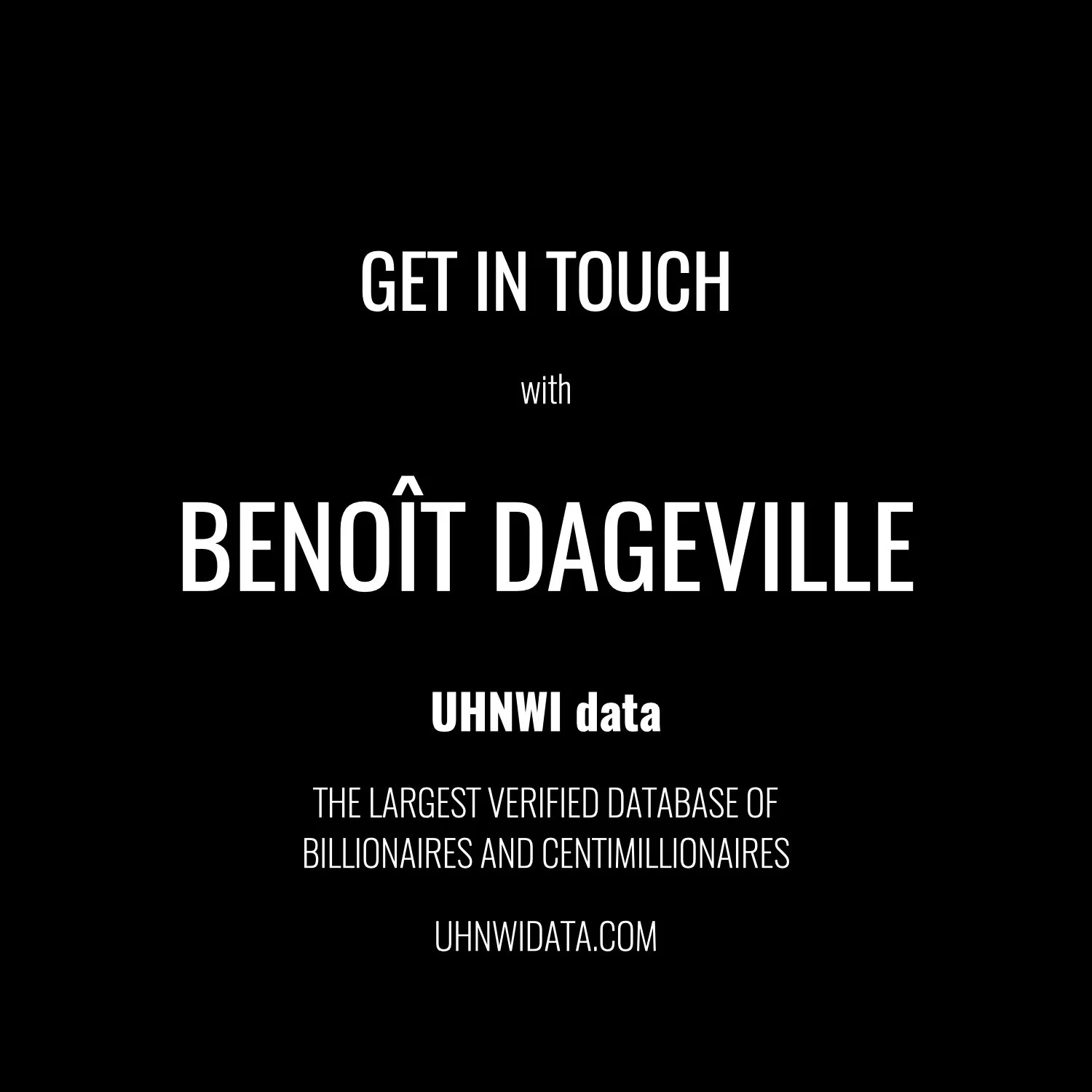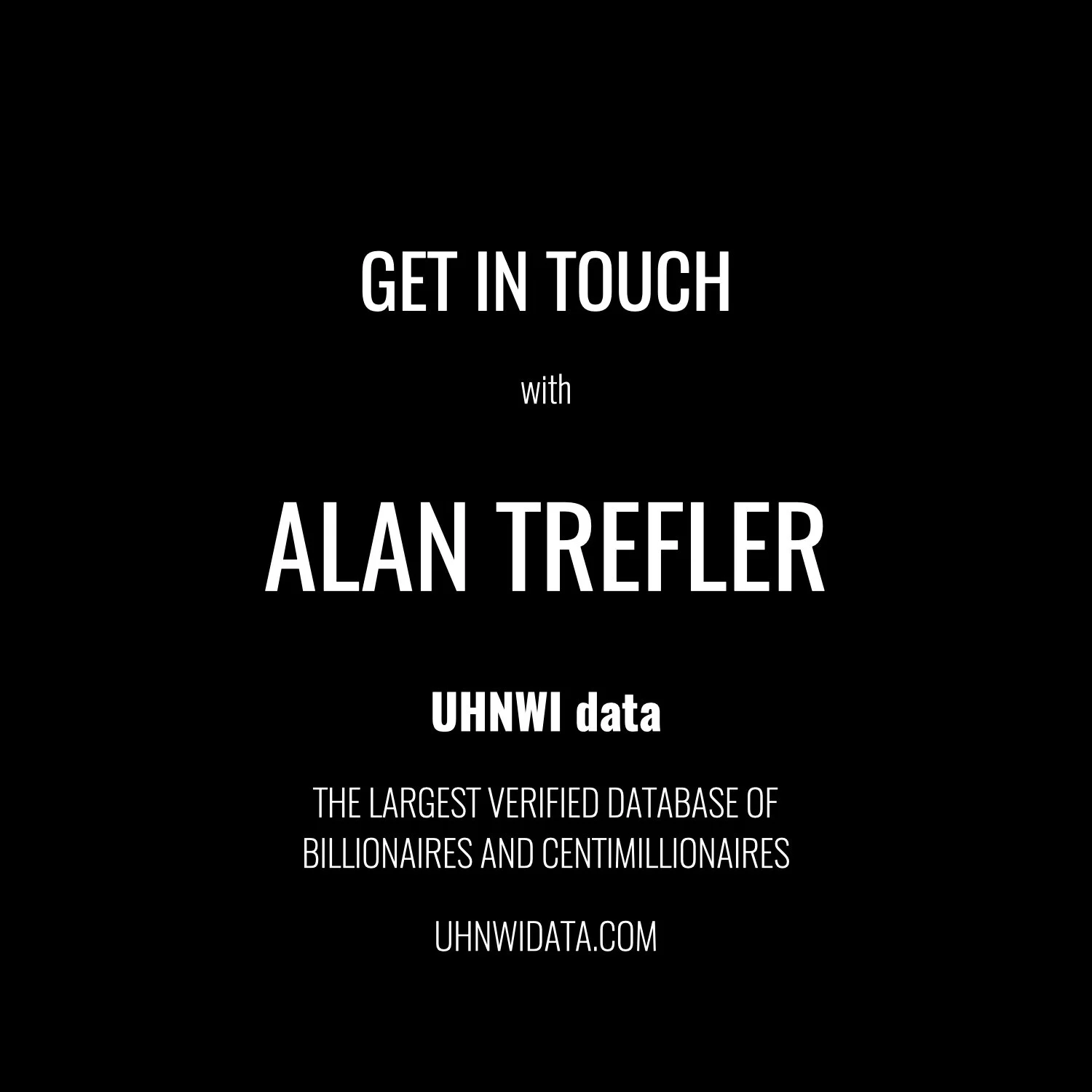James H. Goodnight (born 1943) is an American businessman and statistician who co-founded SAS Institute in 1976 and has served as its president and chief executive officer since inception.[1][2][3]
Goodnight developed the initial SAS software during his doctoral studies in statistics at North Carolina State University, where he later became a faculty member before partnering with colleague John Sall to commercialize the system for data analysis.[2][4] Under his leadership, SAS has grown into the world's largest privately held software company, specializing in analytics, business intelligence, and artificial intelligence solutions, with consistent annual revenue increases and a global workforce exceeding 12,000 employees.[1][5] Goodnight owns approximately two-thirds of the company, contributing to his estimated net worth of $16.3 billion as of October 2025, making him the wealthiest individual in North Carolina.[2][6] His management approach emphasizes employee satisfaction through campus-like facilities, flexible work policies, and professional development, resulting in low turnover rates that exceed industry averages.[1] Goodnight has also been recognized for contributions to education, co-founding Cary Academy, an independent school, and advocating for innovative teaching methods informed by data analytics.[7] Awards include designation as a Great American Business Leader by Harvard Business School and inclusion among America's 25 Most Fascinating Entrepreneurs by Inc. magazine.[5]
Early Life and Education
Childhood and Family Background
James Goodnight was born on January 6, 1943, in Salisbury, North Carolina, to Albert Goodnight and Dorothy Patterson Goodnight, proprietors of a local hardware store.[1][3] The family later relocated within the state during his childhood, maintaining ties to North Carolina's rural and small-town environments.[8]
As a young boy, Goodnight frequently assisted in his parents' hardware store, gaining hands-on experience with tools, mechanics, and practical repairs that cultivated an early aptitude for tangible problem-solving and quantitative assessment.[9] This environment, rooted in the self-reliant ethos of mid-20th-century Southern commerce rather than formal instruction, emphasized empirical tinkering over theoretical abstraction, foreshadowing his lifelong preference for applied, data-driven approaches in later endeavors.[3] Details on his pre-collegiate schooling remain sparse, underscoring a formative period shaped more by familial enterprise and independent exploration than structured academia.[10]
Academic Training and Influences
James Goodnight earned a Bachelor of Science degree in applied mathematics from North Carolina State University (NC State) in 1965.[11] He pursued advanced studies in statistics at the same institution, obtaining a Master of Science in 1968 and a Doctor of Philosophy in 1972.[11] [4] These degrees equipped him with rigorous training in mathematical modeling and statistical inference, core to handling complex empirical datasets.[1]
Goodnight's graduate education occurred within NC State's Department of Statistics, which historically prioritized applied methodologies tailored to agricultural and experimental data challenges prevalent in the region.[4] This environment underscored the value of empirical validation over abstract theorizing, aligning with practical needs for processing real-world variability in crop yields, soil conditions, and experimental designs. Faculty emphasis on data-driven approaches cultivated his appreciation for computational efficiency in statistical computations, recognizing early the limitations of manual calculations for large-scale modeling.[1]
His doctoral research further honed skills in advanced statistical techniques, though specific dissertation details reflect the era's focus on foundational probability and regression methods adaptable to computational frameworks.[11] This training instilled a commitment to causal mechanisms underlying data patterns, prioritizing verifiable outcomes from controlled experiments in fields like agronomy, which informed his later views on evidence-based analysis devoid of extraneous interpretive layers.[4]
Initial Contributions to Statistical Software
Graduate Work at North Carolina State University
Goodnight pursued graduate studies in statistics at North Carolina State University, earning a Master of Science followed by a Ph.D. in 1972.[5][12] His doctoral dissertation, titled "Quadratic Unbiased Estimation of Variance Components," addressed advanced statistical techniques for estimating variability in experimental data, with applications to balanced and unbalanced designs common in agricultural trials.[12]
During his Ph.D. program, Goodnight collaborated with Anthony J. Barr and other researchers on a university-initiated project to develop computational tools for analyzing agricultural research data, initially targeted at processing outputs from field experiments funded by agencies like the U.S. Department of Agriculture.[13][1] This work emphasized procedural macros and subroutines for statistical procedures such as regression and analysis of variance, adapting to the limitations of early mainframe systems like the IBM System/360. He also encountered John Sall, a fellow graduate student, during this period, laying groundwork for future joint efforts in statistical computing.[2]
Following completion of his Ph.D., Goodnight joined the NC State faculty in the Department of Statistics, serving from 1972 to 1976 in teaching and research roles centered on computational statistics for data-intensive domains, particularly agriculture and experimental sciences.[4] His contributions involved refining algorithms for handling large datasets from factorial designs and covariance analysis, amid the academic environment's reliance on short-term, grant-based funding that restricted scope to predefined governmental priorities such as crop yield optimization.[14] This experience underscored the constraints of university-led initiatives, where bureaucratic oversight and funding cycles impeded rapid iteration and expansion beyond narrow experimental contexts, prompting recognition of the advantages of independent structures for broader methodological advancement.[4]
Development of Early SAS Systems
The Statistical Analysis System (SAS) emerged from a collaborative project initiated in 1966 at North Carolina State University (NCSU), involving eight Southern land-grant universities seeking a flexible statistical software package to address limitations in existing tools like the Biomedical Computer Programs (BMD) for analyzing agricultural experiment data.[15] Funded by regional agricultural experiment stations, the effort prioritized practical adaptability over rigid theoretical frameworks, enabling researchers to customize procedures for handling complex datasets from crop trials and livestock studies that often exceeded the capabilities of proprietary systems.[16] James Goodnight, then a graduate student in statistics at NCSU, contributed key statistical routines starting around 1968 under project leader Anthony Barr, focusing on modular FORTRAN-based components that allowed users to extend functionality for specific analytical needs.[17]
Early iterations emphasized efficiency in processing large volumes of observational data, with the initial beta release occurring in 1971 as SAS 71, which integrated data management, statistical analysis, and report generation in a single, extensible framework.[15] Development proceeded iteratively, incorporating feedback from agricultural researchers who tested prototypes on mainframe computers, refining algorithms for procedures like analysis of variance (ANOVA) and regression to reduce computation times and errors in experimental designs common to agronomy.[18] This user-driven approach demonstrated tangible benefits, as evidenced by accelerated output in USDA-funded studies where SAS reduced data processing bottlenecks, enabling faster hypothesis testing and replication of results across datasets that previously required manual tabulation or incompatible software.[19]
By the mid-1970s, the system's modularity—allowing procedure libraries to be built and shared—had proven its value in empirical settings, with over 300 users attending the first SAS Users Conference in 1976, reflecting widespread adoption within academia for its causal efficacy in linking raw data to reproducible insights without over-reliance on vendor-locked features.[20] Goodnight's routines, optimized for vectorized operations on IBM 360-series hardware, underscored a commitment to computational realism, prioritizing scalable performance metrics over abstract elegance to support real-world variability in agricultural variables like soil yields and treatment effects.[3]
Establishment and Expansion of SAS Institute
Founding as a Private Enterprise in 1976
In 1976, James Goodnight, a statistics professor at North Carolina State University (NCSU), co-founded SAS Institute Inc. with colleagues John Sall, Anthony James Barr, and Jane Helwig, formally incorporating the company on July 1 to commercialize statistical software originally developed under university contracts for agricultural research analysis.[16][21] This transition marked a deliberate shift from reliance on NCSU and federal grants—such as those from the U.S. Department of Agriculture—to an independent private entity, enabling direct control over product evolution and customer relationships without institutional oversight.[22][20]
Goodnight emphasized entrepreneurial autonomy as a core rationale for the private structure, viewing public or academic dependencies as potential sources of bureaucratic interference that could hinder agile decision-making and innovation in software development.[22] By establishing SAS as a for-profit venture funded initially through software contracts rather than external investors, the founders avoided equity dilutions from venture capital, preserving full ownership among themselves—Goodnight and Sall eventually holding the majority stakes.[2][22]
From inception, SAS prioritized a site-licensing model, granting organizations perpetual or renewable access to its analytics tools for a fee, which fostered recurring revenue and customer loyalty while aligning with the company's focus on sustained, self-funded operations over short-term speculative financing.[23] This approach underscored a commitment to long-term viability, distinguishing SAS from contemporaries dependent on hardware sales or venture-backed expansions.[24]
Strategies for Sustained Growth and Innovation
SAS Institute's revenue has exhibited consistent annual increases since its 1976 founding, expanding from $10 million in 1980 to over $3 billion by the mid-2010s through progressive enhancements in statistical and analytics software offerings.[2] This trajectory reflects strategic vertical integration into advanced analytics, enabling adaptation to evolving market demands for data processing and predictive modeling without reliance on external financing or debt accumulation.[1] By the 2010s, annual revenues surpassed $3 billion, underscoring sustained profitability amid industry shifts.[2]
A cornerstone of this expansion has been substantial reinvestment in research and development, typically comprising 25-30% of annual revenue, which has facilitated iterative product evolution such as integrations with machine learning and early AI functionalities.[25][26] This approach, emphasizing internal innovation over acquisitions, has allowed SAS to maintain technological relevance and operational margins, with unbroken profitability reported across decades.[1][27]
In 1999, amid preparations for a potential initial public offering, Goodnight opted to retain private ownership as the dot-com bubble intensified market volatility, prioritizing long-term strategic planning over short-term valuation pressures.[28] This decision insulated the company from speculative fluctuations, enabling focused resource allocation toward core product development and customer-driven adaptations rather than quarterly earnings demands.[27]
Navigation of Industry Challenges and Competition
SAS Institute encountered substantial competition from open-source statistical tools such as R and Python, which gained traction for cost-effective analytics, as well as from enterprise giants like IBM offering integrated solutions.[29][30] These alternatives pressured SAS's proprietary model, particularly in predictive analytics where lower-cost options emerged to challenge market leaders.[30] SAS responded by emphasizing the enterprise-grade reliability, support, and performance of its closed-system software, with independent benchmarks in May 2023 demonstrating that the SAS Viya platform processed workloads up to 30 times faster than comparable open-source and commercial competitors.[31] This focus helped sustain a 12.1% share of the global analytics software market as of 2024, positioning SAS third behind IBM and Microsoft amid broader industry fragmentation.[32]
The rise of cloud computing and big data paradigms presented further challenges, as customers demanded scalable, distributed processing beyond traditional on-premises deployments. Under Goodnight's direction, SAS adapted by launching the Viya platform in 2016 as a cloud-ready, open-architecture system capable of real-time handling of massive datasets through parallel processing.[33] This evolution integrated support for modern languages like Python and R within a proprietary framework, enabling cloud deployment on platforms such as AWS and Azure without fully conceding to open-source ecosystems or diluting core intellectual property advantages.[27][34] By 2023, this selective adaptation drove 30% year-over-year growth in cloud and Viya revenues, reflecting resilience in enterprise segments prioritizing validated, secure analytics over commoditized alternatives.[35]
SAS navigated these pressures with operational stability, eschewing major workforce reductions or abrupt strategic pivots that plagued peers during economic volatility. The company maintained profitability annually since 1976 and avoided layoffs through multiple recessions, including hiring during downturns up to 2020, by leveraging internal process efficiencies rather than chasing transient hype like early Hadoop implementations.[36][37] Limited adjustments, such as a 1% workforce reduction in 2023 tied to pre-IPO restructuring, contrasted with broader tech sector cuts exceeding 10% at firms like IBM and Microsoft, underscoring SAS's emphasis on long-term viability over short-term reactivity.[38][39] This approach preserved market position without compromising the proprietary strengths that differentiated SAS in high-stakes enterprise environments.
Leadership Approach and Business Principles
Employee Motivation and Organizational Culture
James Goodnight's approach to employee motivation at SAS Institute prioritizes investments in well-being and autonomy, predicated on the principle that satisfied workers drive innovation and loyalty. He has articulated that "95% of [SAS's] assets drive out the gate every evening," referring to employees, underscoring the need to retain human capital through supportive environments rather than coercive measures.[40] This philosophy manifests in comprehensive perks designed to minimize distractions from work, such as on-campus childcare centers accommodating up to 400 children with subsidized tuition, on-site health care clinics providing primary and specialist services at no cost, and extensive fitness facilities including multiple gyms, pools, and 40 miles of running trails.[41][42][43]
To promote intellectual engagement, Goodnight maintains a flat organizational structure with only three layers and approximately 30 direct reports to him, reducing bureaucratic hurdles and encouraging direct problem-solving.[44][45] These elements foster a culture of minimal hierarchies, where employees are granted significant autonomy in project selection and execution, aligning with Goodnight's view that treating staff as if they make a tangible difference enhances their commitment and creativity.[45] Unlike union-driven models that impose rigid protections, SAS emphasizes merit-based incentives, such as performance-linked bonuses and ongoing training, to retain top talent through intrinsic motivation rather than external mandates.
Empirical outcomes validate this strategy's return on investment: SAS's annual voluntary turnover rate has hovered below 4% for decades, starkly contrasting the software industry's average of 13-15% or Silicon Valley's 20-30%.[46][45][47] This low churn—evident as early as the 1990s when it never exceeded 5%—translates to substantial savings in recruitment and training costs, estimated at multiples of annual salaries per departed employee, while preserving institutional knowledge critical for software innovation.[48] Productivity metrics, including sustained revenue growth to over $3 billion annually without public market pressures, correlate with these retention figures, as long-tenured teams exhibit higher output in analytics development compared to high-turnover competitors reliant on constant rehiring.[47] Goodnight's data-informed rationale counters critiques of such perks as mere indulgences, demonstrating causal links between employee satisfaction investments and measurable gains in loyalty, reduced absenteeism, and creative problem-solving unencumbered by frequent disruptions.[49]
Decision-Making on Ownership and Public Markets
Goodnight has steadfastly kept SAS Institute privately held since its founding in 1976, attributing this structure to the avoidance of external shareholder demands that prioritize short-term financial metrics over enduring strategic priorities. In a 2017 interview, he stated, "It has been a help to us not to have people on Wall Street tell us how to run our company," emphasizing how private ownership enables decisions unencumbered by quarterly earnings volatility.[27] This stance contrasts with public analytics firms, which often face analyst scrutiny leading to reactive cost-cutting or pivots that undermine R&D continuity, as evidenced by broader industry patterns where public software companies exhibit higher earnings variability tied to market cycles.[50]
SAS's private status has facilitated patient capital deployment, with the company reporting over $3 billion in annual revenue, consistent profitability, and zero long-term debt as of recent filings, allowing reinvestment into innovation without the dilution of focus from stock buybacks or dividend pressures.[51] Goodnight's resistance to initial public offerings (IPOs) stems from observations of peers' experiences, where public listing correlates with heightened short-termism—such as deferred investments to meet EPS targets—rather than the causal drivers of competitive advantage like sustained product evolution. For instance, while public competitors in analytics have navigated boom-bust cycles influenced by investor sentiment, SAS achieved steady growth, including 9% solutions revenue increase in 2023, by prioritizing internal metrics over market speculation.[35]
Although SAS announced IPO intentions in July 2021 to support employee equity incentives and succession planning amid Goodnight's advancing age, these plans were postponed from an initial 2024 target to 2025 and further delayed in May 2025 due to market volatility, underscoring a deliberate approach to ownership transitions that preserves operational independence.[50][52][53] This owner-aligned governance model, where Goodnight holds approximately two-thirds ownership, fosters causal control over resource allocation, directing funds toward long-term value creation—evident in SAS's debt-free balance sheet and multi-decade profitability—rather than the performative quarterly reporting that often misaligns public executives with enterprise health.[28]
Empirical Outcomes and Critiques of Conventional Management
SAS Institute under James Goodnight's leadership maintained profitability every year from its 1976 founding until at least 2020, despite economic downturns that led competitors to report losses.[36][1] This record contrasts with industry norms, where software firms often face volatile earnings tied to market cycles and public market pressures. The company's avoidance of layoffs during recessions, such as the 2008 financial crisis, preserved institutional knowledge and sustained output, contributing to revenue growth averaging double digits in many years prior to recent flattening.[54]
Employee-centric policies correlate with consistent recognition as a top workplace, including rankings on Fortune's 100 Best Companies to Work For list since 1998 and induction into its Hall of Fame for sustained performance.[55][56] These outcomes link to elevated productivity metrics, with SAS achieving approximately $222,000 in revenue per employee as of recent estimates, exceeding the median for private SaaS firms at $129,000.[57][58] High retention—often cited above 90% annually—reduces turnover costs, estimated at 1.5–2 times salary in tech, enabling reinvestment into R&D at 20–25% of revenue, which has yielded over 770 analytics patents and ongoing innovation in AI and data tools.[59][60]
Critiques of Goodnight's model highlight potential over-reliance on paternalistic perks, such as on-campus amenities and flexible hours, which may foster complacency in non-creative roles where strict accountability drives efficiency elsewhere. While effective in SAS's analytics niche, scalability debates arise from the firm's private status and founder-centric decision-making, which could strain under broader diversification or succession without Goodnight's direct influence. Success attributes to merit-based incentives and low bureaucracy, enabling creative output, rather than equity-focused mandates; data on per-employee productivity underscores performance-driven rewards over uniform egalitarianism, countering narratives prioritizing distributional policies absent output linkages.[27][44]
Technological and Industry Impact
Advancements in Analytics and AI Under Goodnight's Guidance
Under Goodnight's leadership as CEO since 1976, SAS evolved from a statistical software package originally created by him and colleagues at North Carolina State University in the late 1960s to analyze agricultural research data into a platform supporting advanced predictive analytics and AI-driven empirical modeling.[1] This foundation in rigorous statistical procedures enabled the development of tools for handling large-scale data sets, emphasizing verifiable predictions grounded in observed patterns rather than unsubstantiated assumptions. Goodnight's early contributions to the core codebase established a commitment to data integrity, which persisted as SAS expanded capabilities for multivariate analysis and forecasting in the 1980s and 1990s.[22]
The software's advancements under Goodnight facilitated predictive applications across sectors, including finance—where SAS procedures model credit risk and detect fraudulent transactions through probabilistic simulations—and healthcare, supporting outcome forecasting and treatment efficacy evaluation via time-series and regression techniques.[61][62] These tools prioritize causal inference methods, such as those in SAS/STAT procedures for estimating treatment effects and mediation analysis, allowing users to test hypotheses against real-world data and refute spurious correlations in policy or operational models.[63][64]
Goodnight steered the integration of AI through SAS Viya, a cloud-native platform introduced in 2016 that embeds machine learning algorithms within a framework of explainable analytics, committing $1 billion in 2023 to AI solutions focused on scalable, validated predictions over opaque generative models.[65] This direction underscores a strategic aversion to hype-driven ML, instead advancing platforms that enforce empirical validation—evident in Viya's support for causal graph procedures and high-performance computing to simulate intervention impacts, thereby enabling organizations to refine decisions based on causal realism rather than correlative artifacts.[66][67]
SAS's Role in Data-Driven Decision-Making
SAS software has been widely adopted in government and business sectors to enhance fraud detection and operational optimization, enabling organizations to replace intuition-based judgments with empirical analysis. For instance, the United States Department of Agriculture's Food and Nutrition Service implemented SAS analytics in 2013 to identify suspicious patterns in Supplemental Nutrition Assistance Program (SNAP) transactions, detecting beneficiary behaviors indicative of trafficking benefits for cash and recovering millions in improper payments annually.[68] Similarly, SAS's Fraud Framework supports enterprise-wide detection of fraud, waste, and abuse, as applied in various government initiatives to reduce budget deficits through advanced pattern recognition and anomaly detection.[69] In business contexts, SAS optimization tools, such as the Strategic Supply Chain Optimization model introduced in 2025, allow firms to minimize costs and improve responsiveness by modeling end-to-end supply chains with predictive analytics.[70]
Unlike approaches fixated on sheer data volume amid "big data" trends, SAS prioritizes data quality, model accuracy, and variety to yield reliable insights, avoiding pitfalls of unrefined high-volume processing. SAS documentation emphasizes that effective analytics often requires focusing on quality over volume, as excessive scale without rigorous cleansing leads to erroneous conclusions.[71] This principle manifests in extensions like SAS Anti-Money Laundering solutions, which integrate behavioral analytics and machine learning to monitor transactions for illicit activity, achieving higher detection accuracy than rule-based systems reliant on raw volume.[72] Real-world applications, such as those in financial institutions, demonstrate reduced false positives and compliance with regulatory standards by emphasizing refined, context-aware data processing.[73]
Over the long term, SAS tools facilitate causal inference in public policy domains susceptible to ideological distortions, promoting evidence-based realism through structured methodologies. Procedures like DEEPCAUSAL, available in SAS Econometrics since 2021, enable estimation of policy effects using deep neural networks to address confounding in observational data.[74] In governmental settings, such as UK prison operations analyzed via SAS in 2025 submissions to parliamentary committees, data-driven causal modeling informs resource allocation and policy adjustments, countering unverified assumptions.[75] The CAUSALGRAPH procedure further supports directed acyclic graphs for identifying causal pathways, empowering rigorous evaluation over correlational fallacies prevalent in biased institutional analyses.[76][67]
Awards, Honors, and Public Recognition
Business and Innovation Accolades
In 2004, Harvard Business School named James Goodnight a Great American Business Leader, citing his foundational role in developing SAS Institute into a privately held enterprise that pioneered advanced statistical software and analytics tools, enabling widespread adoption of data-driven methodologies in business operations.[1] That year, Inc. magazine also designated him one of America's 25 Most Fascinating Entrepreneurs, praising his strategic decisions to retain full ownership of SAS and invest heavily in employee retention and research, which supported decades of uninterrupted revenue growth exceeding 10% annually on average.[1]
SAS Institute earned the gold medal in the software industry category from Inc.'s inaugural Best in Business awards in 2020, under Goodnight's direction, for deploying predictive modeling solutions that optimized hospital resource distribution amid the COVID-19 crisis, demonstrating the firm's capacity for rapid, real-world application of analytics innovations.[77] This accolade highlighted SAS's resilience and focus on substantive technological advancements over transient market hype, aligning with Goodnight's management philosophy of prioritizing R&D allocation—typically 25% of revenues—toward scalable software architectures that have sustained the company's market leadership in enterprise analytics.[15]
Goodnight received the CEO Great Place to Work For All Leadership Award in March 2020 from Great Place to Work, recognizing his implementation of data-informed HR practices that enhanced organizational innovation by minimizing turnover to under 4% annually and fostering a campus-like environment conducive to creative problem-solving in software engineering.[78] These recognitions collectively affirm Goodnight's contributions to long-term business viability through integrated software innovation and management strategies that eschew conventional short-term metrics in favor of enduring competitive advantages.
Contributions to Education and Policy
Goodnight served as a key advocate for education reform through his membership in the Business Roundtable, where he spearheaded a national report in 2016 titled Why Reading Matters, calling on business leaders to prioritize third-grade reading proficiency and early literacy to address workforce skills shortages.[79] This effort extended to STEM education, emphasizing alignment of K-12 curricula with digital economy demands, as outlined in the organization's 2018 report Stumbling on STEM, which highlighted the need for business involvement in fostering computational skills amid projected shortages in STEM occupations—such as the 20% of North Carolina's fastest-growing jobs requiring STEM education by 2024.[80][81] In North Carolina, Goodnight rallied CEOs to secure increased state funding for prekindergarten programs, linking early intervention to long-term economic productivity based on data showing correlations between early literacy and reduced skills gaps.[82]
He has critiqued the U.S. education system's heavy reliance on standardized testing and rote learning methods, such as bubble-sheet assessments, which he contends foster disengagement and fail to cultivate creativity or problem-solving abilities essential for modern economies.[83] Goodnight argues this approach risks "losing an entire generation of learners" by prioritizing test preparation over interactive engagement, advocating instead for policies promoting computational thinking and data-informed curricula to shift from memorization to analytical reasoning.[83] His views draw from empirical patterns observed in analytics applications, where workforce data reveal persistent gaps in critical thinking skills, underscoring the causal link between outdated pedagogical models and diminished innovation capacity.[84]
These policy positions emphasize business-led, evidence-based reforms over bureaucratic mandates, informed by Goodnight's co-authorship of "Managing for Creativity" in the Harvard Business Review, which ties organizational success to environments nurturing intrinsic motivation—principles he extends to education to counteract systemic disincentives for creative output.[82]
Philanthropy and Civic Engagement
Initiatives in Education Reform
Goodnight has directed substantial philanthropic resources through the Goodnight Educational Foundation toward higher education programs emphasizing analytics and STEM fields, particularly at North Carolina State University (NC State), his alma mater. Since 2008, the Goodnight Scholarships have supported over 1,000 low- and middle-income North Carolina residents pursuing degrees in STEM disciplines or STEM education, providing up to $23,000 annually along with developmental programming designed to foster professional skills and leadership.[85] These merit- and need-based awards target the analytics skills gap by prioritizing outstanding students capable of addressing workforce demands in data-driven fields.[85]
Additional foundation grants have funded targeted initiatives to enhance early literacy and technical competencies, such as a $1 million award in 2021 to the North Carolina Independent Colleges and Universities for a Science of Reading program aimed at boosting third-grade proficiency, which correlates with long-term reductions in skills deficiencies and higher employability.[86] Goodnight's efforts extend to SAS-led outreach, integrating analytics tools into P-12 and postsecondary curricula through partnerships with educators and competitions like Hack the Case, which train students in solving business analytics problems to build practical expertise.[84] These programs emphasize measurable skill acquisition, with SAS reporting increased participation in computer science courses—51% of U.S. high schools now offer programming—though gender and minority disparities persist in advanced analytics pathways.[84]
As an advocate for education reform, Goodnight has emphasized technology integration as essential to preparing students for analytics-intensive careers, arguing in 2011 that embedding tools like laptops and software in classrooms enables personalized learning and closes the STEM talent shortage more effectively than traditional methods.[83] His initiatives prioritize private funding for outcome-oriented training over generalized public expenditures, yielding cohorts of graduates equipped for high-demand roles; for instance, Goodnight Scholars receive tailored mentorship and experiences that enhance employability in data analytics, contributing to a pipeline of skilled professionals amid persistent workforce gaps.[85][87] This approach has demonstrably scaled access to specialized education, with recent expansions doubling first-year awards to 100 students annually starting in 2025.[88]
Support for Analytics Skills Development
SAS Institute, under CEO James Goodnight's leadership, has committed substantial corporate resources to global analytics education initiatives aimed at bridging skills gaps in data analysis and application. These efforts include the SAS Academic Programs, which supply free software, curricula, and training materials to over 500 institutions worldwide, enabling students and educators to acquire practical analytics competencies aligned with industry needs.[1] The programs emphasize hands-on projects using SAS tools, fostering verifiable expertise rather than superficial exposure.[87]
In response to documented shortages in analytic talent—where demand for such skills outpaces supply—SAS launched SAS Analytics U in 2014, an online platform delivering self-paced courses in programming, statistical analysis, and predictive modeling.[89] This initiative, extended globally, targets both academic learners and professionals, with Goodnight highlighting its role in preparing workers for roles requiring data-driven decision-making. Certifications earned through these programs, such as SAS Certified Data Scientist, provide employers with standardized proof of proficiency, correlating with improved task efficiency in analytics workflows.[90]
Specialized extensions include training in anti-money laundering (AML) applications, where SAS courses cover transaction monitoring, alert triage, and regulatory compliance using proprietary software. These modules, part of broader fraud and security intelligence paths, equip financial institutions' staff to detect illicit patterns with reduced false positives, enhancing operational effectiveness in high-stakes sectors.[91] Goodnight's personal philanthropy, channeled through the Goodnight Educational Foundation, complements corporate efforts by funding STEM-focused programs that build foundational analytics aptitudes, though corporate SAS investments predominate in professional-level training.[92]
Goodnight advocates self-sustaining models where businesses fund employee upskilling internally, avoiding dependency on government subsidies, as exemplified by SAS's allocation of resources to ongoing talent development that yields sustained productivity. Internal SAS data indicate that such investments correlate with higher innovation output and lower turnover, with certified teams demonstrating measurable gains in processing complex datasets—up to 20-30% faster resolution in workforce analytics scenarios per case studies.[93] This approach prioritizes empirical validation of skills through certifications and performance metrics, challenging narratives that equate broad access with competence by requiring demonstrated mastery for economic impact.[94]
Personal Life and Views
Family, Wealth, and Lifestyle
James Goodnight married Ann Baggett in 1966, and the couple has three children: two daughters, Leah and Susan, and a son, James.[3][95][96] Despite his high-profile role as CEO of SAS Institute, Goodnight maintains a notably private family life, rarely discussing personal matters publicly.[9]
Goodnight's net worth stands at $16.3 billion as of October 26, 2025, making him one of the wealthiest individuals in the United States and the richest resident of North Carolina.[2] This fortune stems predominantly from his ownership of roughly two-thirds of SAS, which he has kept privately held to foster long-term strategic decisions unburdened by quarterly market pressures.[6]
His lifestyle emphasizes operational efficiency and deep integration with SAS operations over lavish displays of wealth, including routines centered around the company's expansive Cary campus where he resides nearby.[97] Goodnight's approach reflects a deliberate choice for sustained productivity and company loyalty rather than extravagance.[44]
Intellectual Pursuits and Public Stances on Education
Goodnight has long pursued rock collecting as an intellectual avocation, beginning in childhood when he gathered quartzes and arrowheads in the Greensboro area. His collection exceeds 400 specimens, encompassing minerals, fossils, meteorites, and dinosaur eggs sourced globally, such as amethyst crystals from North Carolina and rare gems displayed on custom shelves in his SAS office and conference room. He views minerals as "the first art—art that can't be replicated by man," emphasizing their inherent patterns and uniqueness formed through geological processes.[98][99][100]
This hobby underscores a methodical engagement with classification and natural order, involving identification, cataloging, and appreciation of structural intricacies—disciplines that echo the pattern recognition central to statistical analysis. Goodnight routinely acquires 10 to 12 new items annually, integrating the practice into his routine as a counterpoint to professional demands.[98]
Goodnight has voiced sharp critiques of the U.S. education system, portraying it as a disincentive to innovation and creative thinking due to its resistance to substantive change. He observes that "nothing has changed in the education system in the last 100 years, except they have whiteboards instead of blackboards," arguing this rigidity stifles the development of problem-solving skills essential for economic competitiveness. Such systemic inertia, he contends, exacerbates empirical shortcomings like widespread reading deficiencies—evident in North Carolina where low proficiency correlates with reduced workforce productivity and GDP contributions—and broader failures to cultivate STEM aptitude amid global talent shortages.[101][102][54]
To counter these issues, Goodnight proposes reforms centered on technology-driven alternatives that prioritize engagement and measurable outcomes over uniform, centralized mandates. His advocated "single best idea" for K-12 involves interactive online curricula mapped to standards like Common Core, incorporating multimedia elements to foster critical thinking, collaboration, and creativity in a manner attuned to students' digital environments, thereby reducing dropout risks and disengagement from outdated methods like static textbooks.[83]
Practically, he co-founded Cary Academy in 1996 as a private model school adjacent to SAS, equipping each student with a laptop and deploying SAS-developed "Curriculum Pathways"—an interactive resource now adopted by over 400 U.S. districts—which demonstrates decentralized innovation's potential to outperform traditional public frameworks. While proponents of centralized systems highlight equitable access, Goodnight's emphasis on competition via proven pilots aligns with data revealing stagnant U.S. performance in international assessments (e.g., PISA rankings lagging in math and science) and causal links between pedagogical inflexibility and innovation deficits, as tracked by metrics like patent outputs per capita relative to peers like South Korea.

